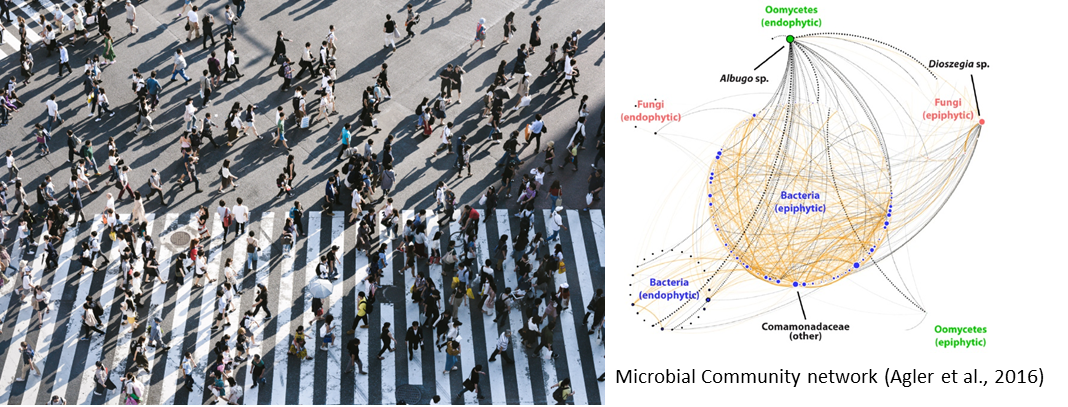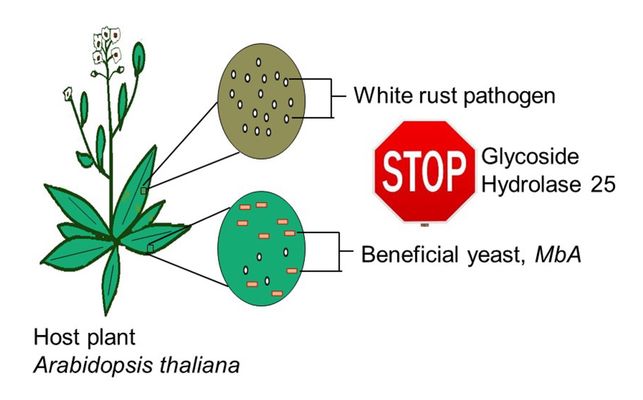The social network: How microbes protect plants
Plants have a thriving social life thanks to microorganisms, such as yeasts, bacteria, fungi, and oomycetes which surround every part of the plant body. Each of these individual microbes interacts with one another and the plant to form a community network. It is fair to assume that each individual leaf has way more crowd than a city street on a Monday morning.
Plants and microbes have been associated for 400 million years and have provided for each other since then. Microbes utilize the carbohydrates fixed by plants and in turn, provide them with essential minerals from soil (check out Milena Malisic’s and Svenja Hermann’s Planter’s Punch to learn more on this).
Nevertheless, interaction between plants and microbes extends beyond trading goods. Because microorganisms can be particularly beneficial in protecting plants from other disease-causing microbes (pathogens) and insect pests.
Beneficial microbes protect the plant in several different ways:
- By competing for space and nutrients with pathogens: From childhood, we are taught ‘sharing is caring’, however, if a pathogen is to be defeated selfishness is the best way to go about.
- By enhancing plant immunity (both Pia Saake and Daniel Moser have nicely explained how microbes modulate the plant immune system to provide protection against diseases, so do check out their Planter’s Punches as well).
- By direct attack on pathogens by secreting antimicrobial proteins
In my PhD project, we have characterized a group of yeasts called MbA which reduce white rust infections in the model plant, Arabidopsis thaliana. A deeper study of this interaction revealed certain genes to be switched on in MbAcells when it encountered the white rust pathogen. Eventually, the enzyme family “Glycoside Hydrolase family 25” was identified as an antimicrobial protein secreted by MbA which reduced white rust disease and restored plants back to their healthy self. Therefore, analysing microbial interactions can provide natural means of plant disease protection.
Until now, spraying synthetic pesticides has been one of the most effective methods for plant disease control. If applied with appropriate equipment, and in optimal dosage, it boosts productivity by warding off a diverse group of pathogens. However, indiscriminate usage, can lead to several health and environmental problems. With the rise in global temperatures, and world population, it is of pressing need that we find other measures for food security than just relying on spraying a bunch of chemicals. Functional understanding of microbiota surrounding a plant can provide meaningful insights into achieving sustainable plant protection strategies and food security.
Planter's Punch
Under the heading Planter’s Punch we present each month one special aspect of the CEPLAS research programme. All contributions are prepared by our young researchers.
About the author

Priyamedha Sengupta is a doctoral researcher in Prof. Gunther Doehlemann’s group at the Institute for Plant Sciences / CEPLAS, University of Cologne since 2019. She received her master’s degree in Botany from University of Calcutta, India in 2017 and later moved to Germany to carry out her doctoral project on investigating microbial interactions on phyllosphere of Arabidopsis thaliana.
Further reading
Agler MT, Ruhe J, Kroll S, Morhenn C, Kim ST, Weigel D, Kemen EM. 2016. Microbial Hub Taxa Link Host and Abiotic Factors to Plant Microbiome Variation. PLoS Biol. doi:10.1371/journal.pbio.1002352
Eitzen K, Sengupta P, Kroll S, Kemen E, Doehlemann G. 2021. A fungal member of the Arabidopsis thaliana phyllosphere antagonizes Albugo laibachii via a GH25 lysozyme. Elife 10:e65306. doi:10.7554/eLife.65306
Köhl J, Kolnaar R, Ravensberg WJ. 2019. Mode of Action of Microbial Biological Control Agents Against Plant Diseases: Relevance Beyond Efficacy. Front Plant Sci 10. doi:10.3389/fpls.2019.00845

